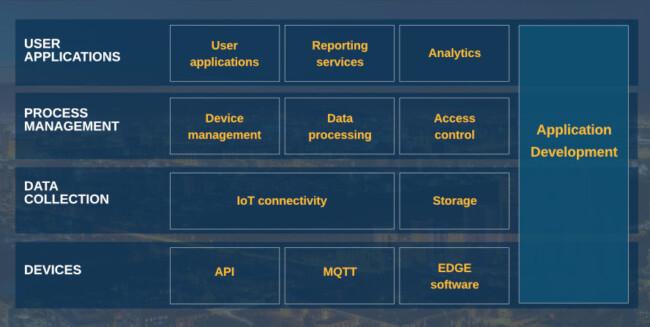
IoT – Make or buy?
- iot-ticket
- IoT
- Edge devices
Who controls the chain?
Machine and equipment manufacturers are gradually becoming service companies. IoT technology enables conversion of business as the intelligence of devices increases allowing them communicate over the Internet. Buying an industrial machine represents only a small part of the entire product lifecycle, and service sales can be much more profitable than equipment or spare parts sales. When equipment vendors gain visibility to end-user activities, they know what the devices are really used for. Instead of being a component supplier in a large system, the company now has a role to play during the entire product life cycle. IoT projects tend to be technical in nature, but the ultimate goal is to increase the standing of machine manufacturers with more control in the value chain.
Parts and levels of implementation
When the objectives are clear, planning can begin. There are many questions: Who is responsible for service development? Who will build the applications? Do you wish to use a special server infrastructure? How will user data be managed?
Building an IoT system consists of several parts and solution providers may approach the matter from a relatively narrow point of view.
- End-user applications are the most visible part of IoT solutions. Very few systems provide ready-made templates or solutions that speed up implementation. Too often, IoT systems are encoded from scratch and the project begins with the hiring of coders.
- Managing a fleet is a demanding task. You need to combine data from several different devices into logical views without compromising anyone’s security.
- It is advisable to use diverse solutions for data storage when processing time series data or complex installation-specific hardware configurations.
- In server platform strategies, your own on-premise servers, Azure or AWS can all be sensible alternatives, and choosing a cloud provider should not be limited to a single provider.
- In IoT connectivity services, cloud-based systems can provide good scalability as the equipment fleet expands. Open interfaces for industrial automation also provide good solutions.
- There are many options for Edge devices, and application needs determine how much computing power or memory is required. Security, upgradeability and cloud connectivity should be implemented in a manner ensuring usability for the entire product life cycle.

How to build IoT?
IoT projects should focus on business activities and end users. The ultimate question is how to convert data into valuable information? Servers and data collection are simple things when you think about it.
- Set indicators and objectives for measuring process efficiency.
- Time spent on planning processes is time well spent. Do a quick proof-of-concept experiment to ensure the viability of assumptions.
- Identify not only the IoT devices but also other systems that need to be connected.
- Don’t build IoT from scratch unless you have a really good reason for doing so. There is a large number of ready-made components and good solutions to choose from.
You should give priority to open interfaces and multi-vendor platforms to ensure that the software architecture will last as long as the industrial machine, i.e. 10-20 years.
The author also works as Professor of Industrial Engineering at the University of Vaasa.
Author
